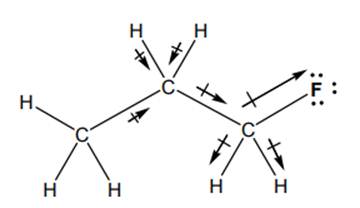
Concept explainers
Interpretation: The most acidic

Concept introduction: Electronegative elements have tendency to attract electrons towards it. Since electrons are shared more towards electronegative element, it acquires partial negative charge on it. As a result, other bonded atom develops partial positive charge. Polarization in any molecule arises due to electronegativity difference between bonded atoms. Polarization that is caused by electronegative atom can induce polarization in neighboring bonds to very small extent. This effect is known as inductive effect. Due to this effect, hydrogen attached to positive atom becomes more acidic than that on neutral atom. This also explains more acidic nature of hydrogens attached to electronegative atoms as compared to other atoms.
Want to see the full answer?
Check out a sample textbook solution
Chapter 4 Solutions
Organic Chemistry: A Guided Inquiry
- Construct an explanation for why sulfuric acid is such a strong acid. (Note that sulfur is in thethird row of the periodic table and can have more than eight electrons.)arrow_forwardFor each structure you drew in the answer to the previous question, classify it as a strong acid,strong base, weak acid, or weak base.arrow_forwardDraw the structure of the conjugate base of water. (Note that it does not appear in Figure 4.11).arrow_forward
- Consider the following bases: a. For each base above, circle the atom/atoms with the highest PE (will release the most P.E.when a lone pair on this atom combines with an H+ ) b. Rank the bases 1 (highest P.E./strongest base) to 7 (lowest PE/weakest base), and explainyour reasoning.arrow_forwardHello, can you please help with the most basic to acidic? Thank Youarrow_forwardFor each set, circle the most acidic compound and underline the least acidic compound.arrow_forward
- Circle the most acidic hydrogen atom in the structure shown below.arrow_forwardCircle the more acidic compounds. I need the sub-parts on the right answered.arrow_forwardHello, can you help me this one? I just don't know how to do the problem. I understand what the question is asking me, but I don't know how to do themarrow_forward
 Organic Chemistry: A Guided InquiryChemistryISBN:9780618974122Author:Andrei StraumanisPublisher:Cengage Learning
Organic Chemistry: A Guided InquiryChemistryISBN:9780618974122Author:Andrei StraumanisPublisher:Cengage Learning
